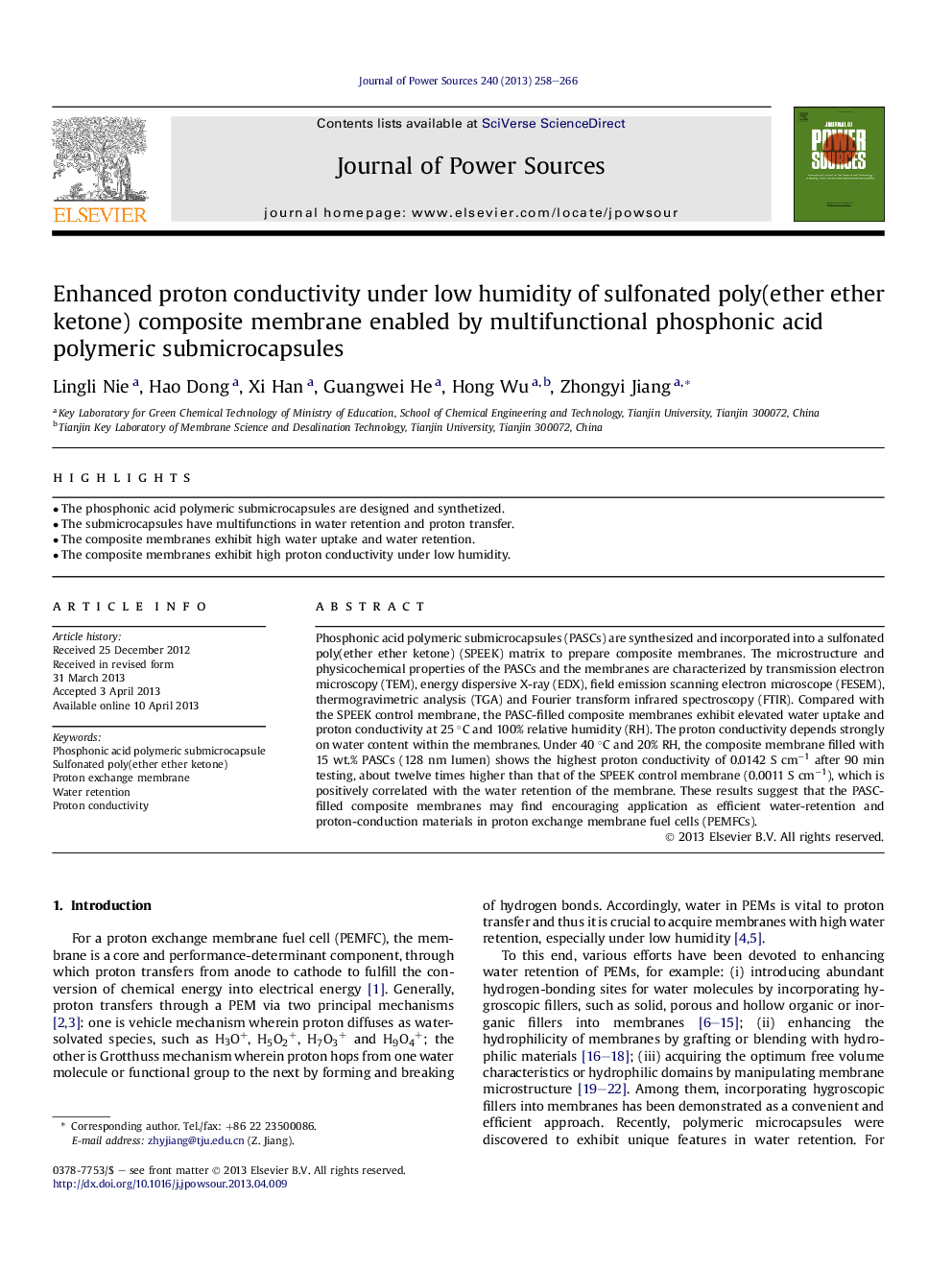| Article ID | Journal | Published Year | Pages | File Type |
|---|---|---|---|---|
| 7739787 | Journal of Power Sources | 2013 | 9 Pages |
Abstract
Phosphonic acid polymeric submicrocapsules (PASCs) are synthesized and incorporated into a sulfonated poly(ether ether ketone) (SPEEK) matrix to prepare composite membranes. The microstructure and physicochemical properties of the PASCs and the membranes are characterized by transmission electron microscopy (TEM), energy dispersive X-ray (EDX), field emission scanning electron microscope (FESEM), thermogravimetric analysis (TGA) and Fourier transform infrared spectroscopy (FTIR). Compared with the SPEEK control membrane, the PASC-filled composite membranes exhibit elevated water uptake and proton conductivity at 25 °C and 100% relative humidity (RH). The proton conductivity depends strongly on water content within the membranes. Under 40 °C and 20% RH, the composite membrane filled with 15 wt.% PASCs (128 nm lumen) shows the highest proton conductivity of 0.0142 S cmâ1 after 90 min testing, about twelve times higher than that of the SPEEK control membrane (0.0011 S cmâ1), which is positively correlated with the water retention of the membrane. These results suggest that the PASC-filled composite membranes may find encouraging application as efficient water-retention and proton-conduction materials in proton exchange membrane fuel cells (PEMFCs).
Keywords
Related Topics
Physical Sciences and Engineering
Chemistry
Electrochemistry
Authors
Lingli Nie, Hao Dong, Xi Han, Guangwei He, Hong Wu, Zhongyi Jiang,
